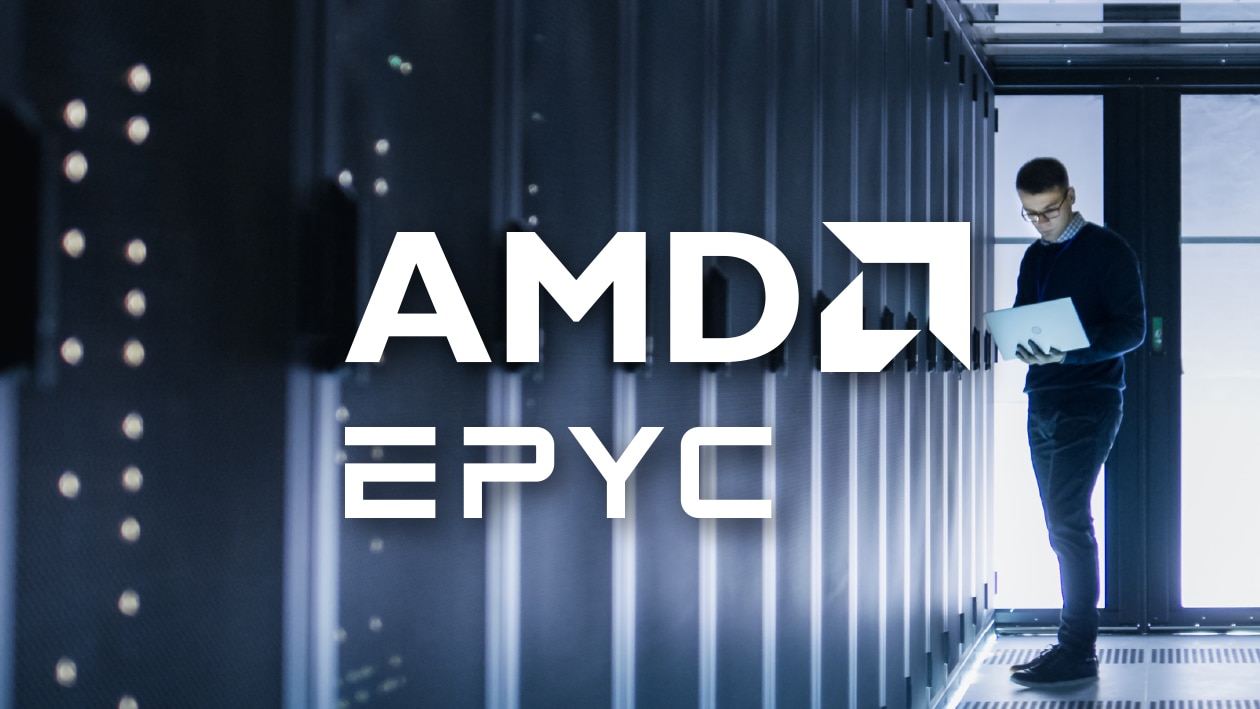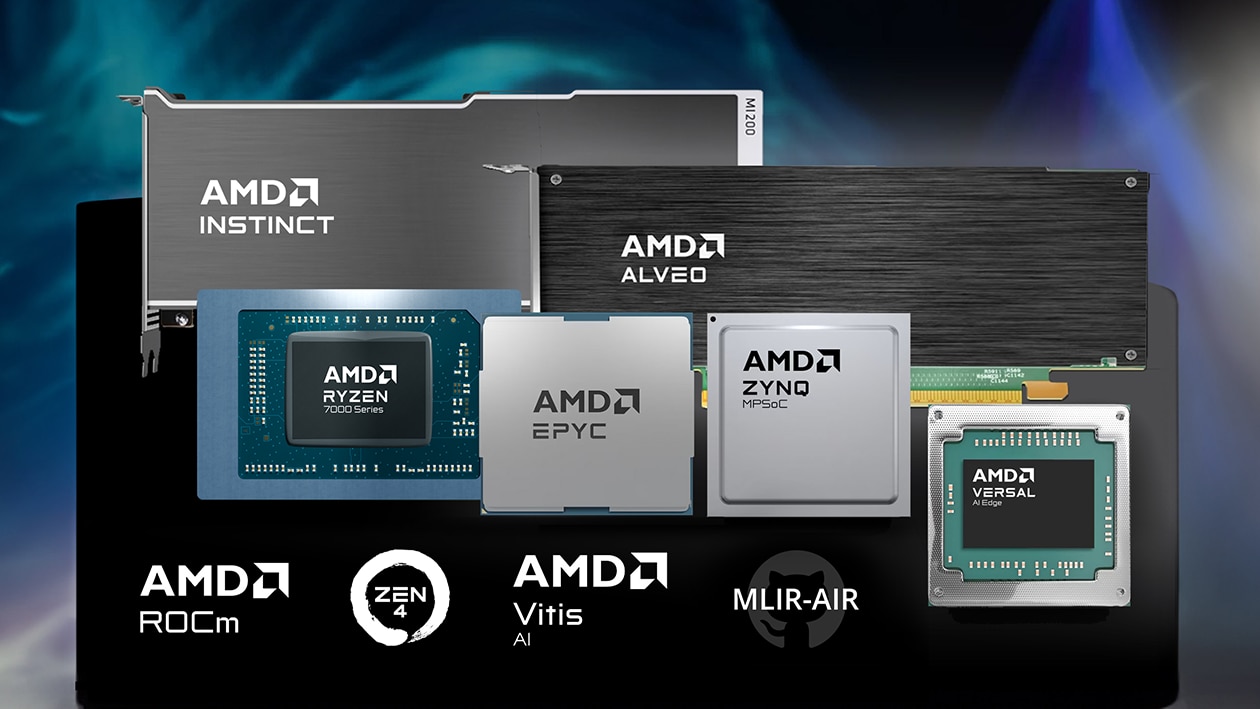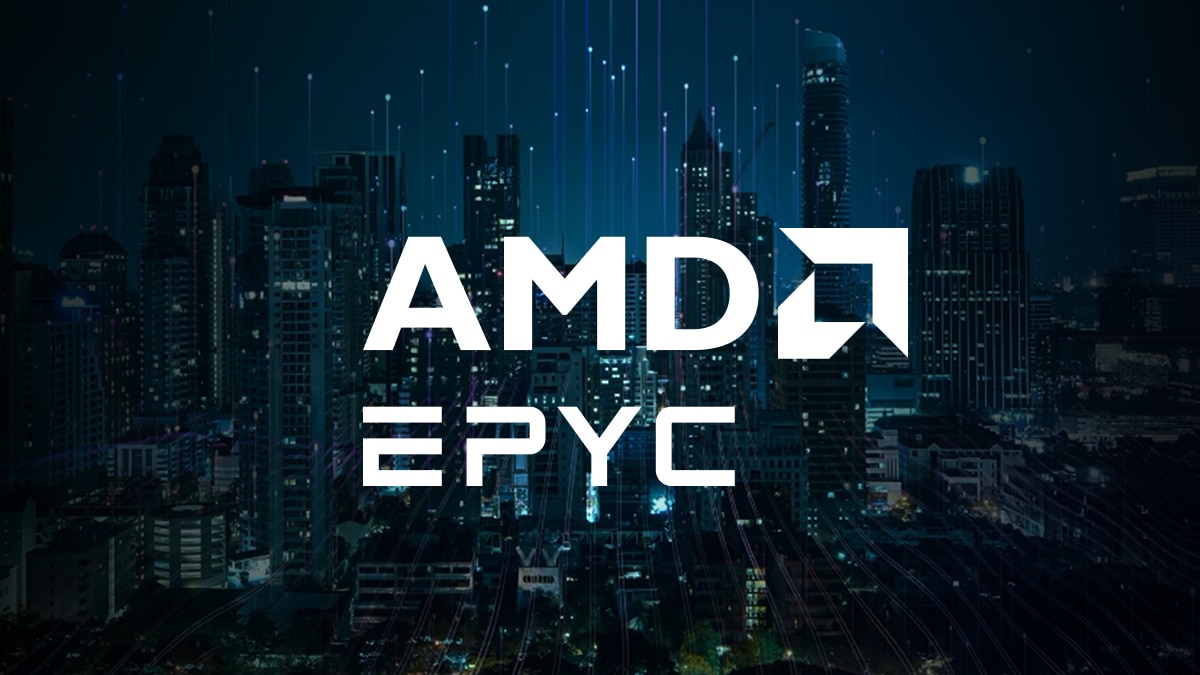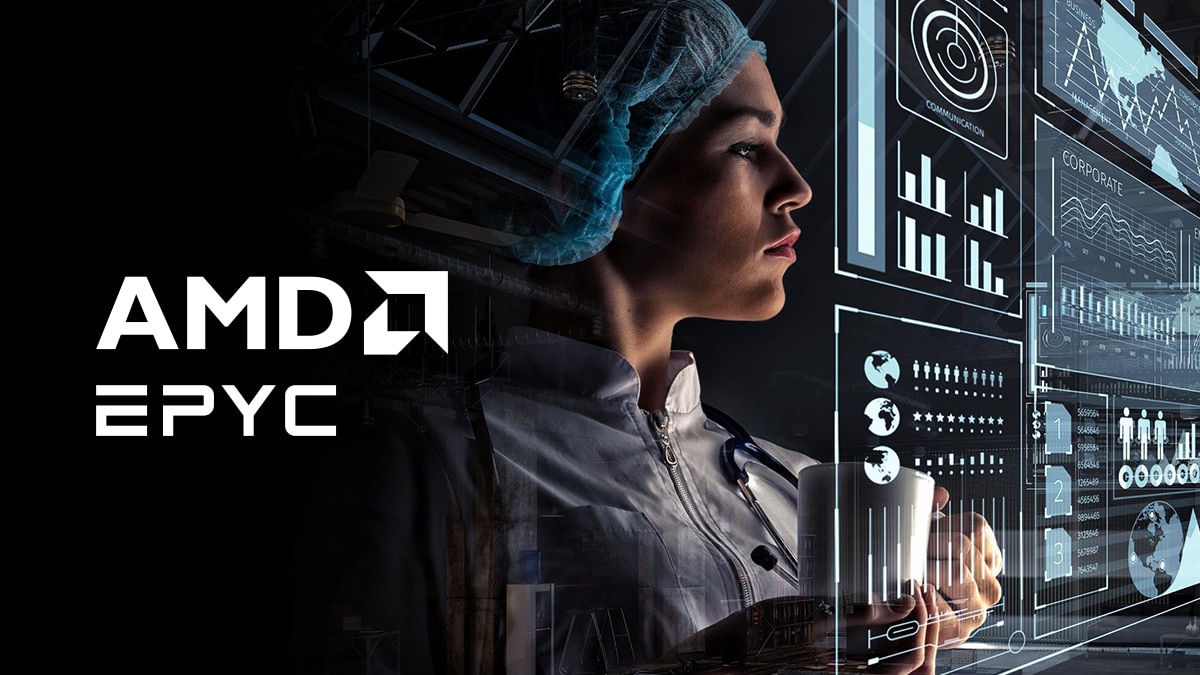The Challenges of Businesses With 100–999 Employees
Mid-market organizations face one of the biggest challenges of all business customers: how to overcome enterprise-grade demands without enterprise-level budgets or staff. With new workloads, the need to modernize legacy infrastructure, the growth of hybrid and remote work, and AI entering the picture, customers are looking for the right support and technologies to remain competitive and agile. You’ve no doubt spent time helping customers by:
Refreshing their aging servers
Controlling spiraling energy costs
Maintaining their security while evolving to new platforms and systems
Finding a solution that lowers ballooning licensing fees
Adding options for AI workloads while running lean budgets and staffing
Delivering an outcome that results in positive ROI today and for the future
AMD helps partners like you deliver what your mid-market customers need without the need for bigger budgets, resulting in smarter business operations and successful outcomes that drive growth.
Modernizing the Mid-Market Business
Now is the perfect time for you to step in and explain why AMD technologies are the optimal choice to achieve modernization from servers through to local devices, balancing short-term gains with long-term value.
Using AMD platforms, customers can:
Consolidate systems to simplify management and free up IT resources
Reduce total cost of ownership (TCO) through strong performance per watt
Lower energy consumption and support sustainability goals
Reduce employee downtime and support overheads
Empower hybrid teams with AI-assisted performance and advanced collaboration and multitasking capabilities
Scale capacity as new workloads and AI opportunities emerge
Partners leading with these messages can help customers achieve real savings while transforming business infrastructure for long-term productivity gains, opening the door to larger multi-year refresh deals, and attach potential across devices and data center infrastructure.
Transforming Performance With AMD EPYC™ Server CPUs
For customers running demanding workloads and relying on outdated servers, AMD EPYC™ server CPUs are transforming what’s possible in the mid-market. Certain AMD configurations have been shown to deliver an estimated 87% reduction in physical server footprint, helping reclaim valuable real estate within the data center.1 In fact, servers enabled with two 32-core AMD EPYC™ 9355 server CPUs can reduce overall server count by up to 35% and energy use by up to 36% for the same virtual machine (VM) workload compared to a competitor option.2 Nokia, for example, reduced their server consumption by 40% after migrating their core workloads to AMD EPYC server CPUs – a notable TCO reduction.3
When it comes to performance, AMD EPYC server CPUs don’t let customers down. AMD EPYC™ 9004 Series processors outperform competitor equivalents in high-performance computing (HPC), virtualization, and database transaction by up to 2.7x in MySQL benchmarks.4 Customers like GEA and ACCIONA have enjoyed huge gains to their productivity; GEA has reduced their video production times measured in hours, using AMD EPYC server CPUs and AMD Radeon™ PRO solutions, while ACCIONA has achieved 4x the performance in rail survey image processing, thanks to AMD EPYC and AMD Ryzen™ Threadripper™ CPUs.5,6
As you know, AMD offers a full portfolio of processors and graphics accelerator products, ranging from cost-efficient hosting using AMD EPYC™ 4000 Series server CPUs to hyperscale deployments that rely on the incredible performance delivered by the AMD EPYC™ 9000 Series server CPU range, and all come with consistent architecture and x86 compatibility.7
With more than 950 AMD-based instances available across AWS, Azure, and similar providers, mid-market organizations have the flexibility to migrate to the cloud when it makes sense for them, resulting in an agile hybrid strategy that enables scaling to different workloads without added complexity.8
Elevating Personal Productivity With AMD-Enabled Devices
Modernization doesn’t stop at the data center. It needs to reach every device your customers and their teams rely on. For many mid-market businesses, the employee experience is a top priority. Their teams expect systems that respond instantly, perform reliably, and help ensure their work is secure, wherever they’re working from.
You can help customers choose devices that strike the perfect balance between power, portability, and manageability—all while staying in budget.
AMD PRO processors deliver the performance teams need without added overhead. With long-lasting reliability, seamless device management, and compatibility that works across mixed-fleet environments, AMD is powering the future of business computing; and with AMD Ryzen™ AI PRO processors and built-in security features, mid-market clients don’t just keep up – they can get ahead.
For every budget and user need, your customers will find AMD technologies in a wide range of devices from today’s top OEMs, letting them equip their teams with the tools they want, without being locked into single vendors or platforms. Future-ready devices with AMD Ryzen AI PRO processors enable fast automation and intelligent collaboration, executing on-device generative AI tasks with the most powerful NPU available on enterprise AI PCs.9
When it comes to savings, independent research shows up to $53 million in TCO benefits when customers use devices powered by AMD Ryzen AI PRO processors over competing solutions10 and recent studies show deployment times are reduced by up to 41% compared to traditional processes, helping IT teams save time and reduce time invested keeping teams online and productive.11
AMD security features like AMD Secure Processor, AMD Shadow Stack, and Memory Guard ensure businesses can defend against attacks, physical theft, and firmware threats, even across hybrid and remote environments.11, 12, 13
Meanwhile, AMD PRO Manageability enables simplified IT deployment and management, allowing IT teams to remotely configure, deploy, monitor, and troubleshoot systems using open standards. With support for multivendor fleets and multiple console options, teams can enjoy fast deployments.
Helping Your Mid-Market Customers Succeed
Mid-market success is built on a balance between budgets and needs, and innovation with simplicity. When you inspire customers to choose AMD, you give them both, through proven performance, trusted security capabilities, and efficiency that delivers remarkable results day after day.
Whether you’re guiding customers through a server overhaul or refreshing their local device fleet, help them stay on the cutting edge of performance and possibility with AMD.
Reach out to your AMD representative to learn more or visit amd.com to explore what’s possible for your customers.
AMD Arena
Enhance your AMD product knowledge with training on AMD Ryzen™ PRO, AMD EPYC™, AMD Instinct™, and more.
Subscribe
Get monthly updates on AMD’s latest products, training resources, and Meet the Experts webinars.

Related Articles
Related Training Courses
Related Webinars
Footnotes
- This scenario contains many assumptions and estimates and, while based on AMD internal research and best approximations, should be considered an example for information purposes only, and not used as a basis for decision making over actual testing. The AMD Server & Greenhouse Gas Emissions TCO (total cost of ownership) Estimator Tool - version 1.12, compares the selected AMD EPYC and Intel® Xeon® CPU based server solutions required to deliver a TOTAL_PERFORMANCE of 391000 units of SPECrate2017_int_base performance as of October 10, 2024. This estimation compares a legacy 2P Intel Xeon 28 core Platinum_8280 based server with a score of 391 versus 2P EPYC 9965 (192C) powered server with a score of 3000 (https://www.spec.org/cpu2017/results/res2024q4/cpu2017-20240923-44837.pdf) along with a comparison upgrade to a 2P Intel Xeon Platinum 8592+ (64C) based server with a score of 1130 (https://spec.org/cpu2017/results/res2024q3/cpu2017-20240701-43948.pdf). Actual SPECrate®2017_int_base score for 2P EPYC 9965 will vary based on OEM publications. Environmental impact estimates made leveraging this data, using the Country / Region specific electricity f actors from the 2024 International Country Specific Electricity Factors 10 – July 2024, and the United States Environmental Protection Agency 'Greenhouse Gas Equivalencies Calculator'. For additional details, see https://www.amd.com/en/legal/claims/epyc.html#q=epyc4#SP9xxTCO-002A
- 9xx5TCO-012: This scenario contains many assumptions and estimates and, while based on AMD internal research and best approximations, should be considered an example for information purposes only, and not used as a basis for decision making over actual testing. The AMD Server & Greenhouse Gas Emissions TCO (total cost of ownership) Estimator Tool - version 1.42, compares the selected AMD EPYC and Intel® Xeon® CPU based server solutions required to deliver a TOTAL_PERFORMANCE of ~16740 units of SPECrate®2017_int_base performance as of April 23, 2025. This analysis compares a 2P 32 core AMD EPYC_9355 Server with a SPECrate2017_int_base score of 969, https://spec.org/cpu2017/results/res2024q4/cpu2017-20241104-45168.pdf; compared to a 2P 32 core Intel Gold_6530 Server with a SPECrate2017_int_base score of 558, https://spec.org/cpu2017/results/res2024q2/cpu2017-20240408-42740.pdf. Environmental impact estimates made leveraging this data, using the Country / Region specific electricity factors from Country Specific Electricity Factors - 2024, and the United States Environmental Protection Agency Greenhouse Gas Equivalencies Calculator. SPEC®, SPECrate® and SPEC CPU® are registered trademarks of the Standard Performance Evaluation Corporation. See www.spec.org for more information. HPE VM Essentials is a trademark of the Hewlett Packard Enterprise Corporation. See www.hpe.com for more information. For additional details, see https://www.amd.com/en/claims/epyc.html#q=9xx5TCO-012.
- Nokia Core Networks business chooses AMD EPYC processors to help lower energy use, costs for CSPs, 2022 https://www.nokia.com/newsroom/nokia-core-networks-business-chooses-amd-epyctm-processors-to-help-lower-energy-use-costs-for-csps
- SP5-071A: MySQL® 8.0.17 OLTP comparison based on AMD measured median scores on 2P EPYC 9654 compared to 2P Xeon Platinum 8380 running virtualized HammerDB TPROC-C (KVM Hypervisor Virtualization server environment with 400 WH and 64 users) as of 12/10/2022. System configurations: 2P AMD EPYC 9654 96-Core Processor, 24 x 32GB DDR5-4800, 8 x 3.2TB (Production platform), 1 x 25GBE Mellanox Technologies MT27710 Family [ConnectX-4 Lx], BIOS RTI1002E, AMD Titanite 2P Intel(R) Xeon(R) Platinum 8380 CPU @ 2.30GHz, 16 x 32 GB DDR4-3200, 8 x 3.84TB (Kioxia KCD6XLUL3T84), 1 x 25GBE Mellanox Technologies MT27710 Family [ConnectX-4 Lx], BIOS 1.1a Supermicro SYS-620U-TNR Both systems used Ubuntu® 22.04.1, SMT ON, 1 container per VM, 10 VMs, each 16 vCPUs, 32GB ram, 100GB disk, HammerDB Version 4.5, MySQL Version 8.0.17, Hypervisor QEMU KVM. Results: 2x AMD EPYC 9654 (~4,851,655 TPROC-C tpm/~2,087,994 NOPM) vs. 2x Xeon Platinum 8380 (~1,788,730 TPROC-C tpm/~770,179 NOPM) for ~2.71x the tpm/NOPM performance. Results may vary.
- AMD, GEA teams with AMD to spotlight creative excellence, 2024. https://www.amd.com/en/resources/case-studies/global-entertainment-awards.html
- AMD, ACCIONA delivers sustainable infrastructure faster with AMD, 2025 https://www.amd.com/content/dam/amd/en/documents/resources/case-studies/acciona-case-study.pdf
- AMD EPYC, 5 reasons Why AMD EPYC processors are the right choice across Database Workloads, 2024. https://www.amd.com/content/dam/amd/en/documents/epyc-business-docs/other/choose-amd-epyc-processors-to-transform-your-database-workloads-listicle.pdf
- AMD Ryzen™ AI PRO 300 Series processors’ NPU offers up to 55 peak TOPS. This is the most TOPS offered on any system found in enterprise today. AI PC is defined as a laptop PC with a processor that includes a neural processing unit (NPU).
- AMD Ryzen™ AI PRO 300 Series processors’ NPU offers up to 55 peak TOPS. This is the most TOPS offered onany system found in enterprise today. AI PC is defined as a laptop PC with a processor that includes a neural processing unit (NPU).
- 22W, Radeon™ 880M graphics, 32GB RAM, 512GB SSD, VBS=ON, Windows 11 Pro vs. a Dell Latitude 7450 with Intel Core Ultra 7 165U processor @15W (vPro enabled), Intel Iris Xe Graphics, VBS=ON, 32GB RAM, 512GB NVMe SSD, Microsoft Windows 11 Enterprise and an IT image(s) on both system. Calculation of total cost savings include comparing the following for an example organization with 25k employees: initial system acquisition cost (per employee) and time value savings per employee (using multitasking performance on typical office workloads).
- GD-72: The AMD Secure Processor is a dedicated on-chip security processor integrated within each system-on-a-chip (SoC) and ASIC (Application Specific Integrated Circuit) designed by AMD. It enables secure boot with root of trust anchored in hardware, initializes the SoC through a secure boot flow, and establishes an isolated Trusted Execution Environment.
- GD-206: Full system memory encryption with AMD Memory Guard is included in AMD Ryzen PRO, AMD Ryzen Threadripper PRO, and AMD Athlon PRO processors. Requires OEM enablement. Check with the system manufacturer prior to purchase.
- 3GD 202: Microsoft Pluton is a technology owned by Microsoft and licensed to AMD. Microsoft Pluton is a registered trademark of Microsoft Corporation in the United States and/or other countries. Learn more at https://www.microsoft.com/en-us/security/blog/2020/11/17/meet-the-microsoft-pluton-processor-thesecurity-chip-designed-for-the-future-of-windows-pcs/. Microsoft Pluton security processor requires OEM enablement. Check with the OEM before purchase. AMD has not verified the third-party claim.
- This scenario contains many assumptions and estimates and, while based on AMD internal research and best approximations, should be considered an example for information purposes only, and not used as a basis for decision making over actual testing. The AMD Server & Greenhouse Gas Emissions TCO (total cost of ownership) Estimator Tool - version 1.12, compares the selected AMD EPYC and Intel® Xeon® CPU based server solutions required to deliver a TOTAL_PERFORMANCE of 391000 units of SPECrate2017_int_base performance as of October 10, 2024. This estimation compares a legacy 2P Intel Xeon 28 core Platinum_8280 based server with a score of 391 versus 2P EPYC 9965 (192C) powered server with a score of 3000 (https://www.spec.org/cpu2017/results/res2024q4/cpu2017-20240923-44837.pdf) along with a comparison upgrade to a 2P Intel Xeon Platinum 8592+ (64C) based server with a score of 1130 (https://spec.org/cpu2017/results/res2024q3/cpu2017-20240701-43948.pdf). Actual SPECrate®2017_int_base score for 2P EPYC 9965 will vary based on OEM publications. Environmental impact estimates made leveraging this data, using the Country / Region specific electricity f actors from the 2024 International Country Specific Electricity Factors 10 – July 2024, and the United States Environmental Protection Agency 'Greenhouse Gas Equivalencies Calculator'. For additional details, see https://www.amd.com/en/legal/claims/epyc.html#q=epyc4#SP9xxTCO-002A
- 9xx5TCO-012: This scenario contains many assumptions and estimates and, while based on AMD internal research and best approximations, should be considered an example for information purposes only, and not used as a basis for decision making over actual testing. The AMD Server & Greenhouse Gas Emissions TCO (total cost of ownership) Estimator Tool - version 1.42, compares the selected AMD EPYC and Intel® Xeon® CPU based server solutions required to deliver a TOTAL_PERFORMANCE of ~16740 units of SPECrate®2017_int_base performance as of April 23, 2025. This analysis compares a 2P 32 core AMD EPYC_9355 Server with a SPECrate2017_int_base score of 969, https://spec.org/cpu2017/results/res2024q4/cpu2017-20241104-45168.pdf; compared to a 2P 32 core Intel Gold_6530 Server with a SPECrate2017_int_base score of 558, https://spec.org/cpu2017/results/res2024q2/cpu2017-20240408-42740.pdf. Environmental impact estimates made leveraging this data, using the Country / Region specific electricity factors from Country Specific Electricity Factors - 2024, and the United States Environmental Protection Agency Greenhouse Gas Equivalencies Calculator. SPEC®, SPECrate® and SPEC CPU® are registered trademarks of the Standard Performance Evaluation Corporation. See www.spec.org for more information. HPE VM Essentials is a trademark of the Hewlett Packard Enterprise Corporation. See www.hpe.com for more information. For additional details, see https://www.amd.com/en/claims/epyc.html#q=9xx5TCO-012.
- Nokia Core Networks business chooses AMD EPYC processors to help lower energy use, costs for CSPs, 2022 https://www.nokia.com/newsroom/nokia-core-networks-business-chooses-amd-epyctm-processors-to-help-lower-energy-use-costs-for-csps
- SP5-071A: MySQL® 8.0.17 OLTP comparison based on AMD measured median scores on 2P EPYC 9654 compared to 2P Xeon Platinum 8380 running virtualized HammerDB TPROC-C (KVM Hypervisor Virtualization server environment with 400 WH and 64 users) as of 12/10/2022. System configurations: 2P AMD EPYC 9654 96-Core Processor, 24 x 32GB DDR5-4800, 8 x 3.2TB (Production platform), 1 x 25GBE Mellanox Technologies MT27710 Family [ConnectX-4 Lx], BIOS RTI1002E, AMD Titanite 2P Intel(R) Xeon(R) Platinum 8380 CPU @ 2.30GHz, 16 x 32 GB DDR4-3200, 8 x 3.84TB (Kioxia KCD6XLUL3T84), 1 x 25GBE Mellanox Technologies MT27710 Family [ConnectX-4 Lx], BIOS 1.1a Supermicro SYS-620U-TNR Both systems used Ubuntu® 22.04.1, SMT ON, 1 container per VM, 10 VMs, each 16 vCPUs, 32GB ram, 100GB disk, HammerDB Version 4.5, MySQL Version 8.0.17, Hypervisor QEMU KVM. Results: 2x AMD EPYC 9654 (~4,851,655 TPROC-C tpm/~2,087,994 NOPM) vs. 2x Xeon Platinum 8380 (~1,788,730 TPROC-C tpm/~770,179 NOPM) for ~2.71x the tpm/NOPM performance. Results may vary.
- AMD, GEA teams with AMD to spotlight creative excellence, 2024. https://www.amd.com/en/resources/case-studies/global-entertainment-awards.html
- AMD, ACCIONA delivers sustainable infrastructure faster with AMD, 2025 https://www.amd.com/content/dam/amd/en/documents/resources/case-studies/acciona-case-study.pdf
- AMD EPYC, 5 reasons Why AMD EPYC processors are the right choice across Database Workloads, 2024. https://www.amd.com/content/dam/amd/en/documents/epyc-business-docs/other/choose-amd-epyc-processors-to-transform-your-database-workloads-listicle.pdf
- AMD Ryzen™ AI PRO 300 Series processors’ NPU offers up to 55 peak TOPS. This is the most TOPS offered on any system found in enterprise today. AI PC is defined as a laptop PC with a processor that includes a neural processing unit (NPU).
- AMD Ryzen™ AI PRO 300 Series processors’ NPU offers up to 55 peak TOPS. This is the most TOPS offered onany system found in enterprise today. AI PC is defined as a laptop PC with a processor that includes a neural processing unit (NPU).
- 22W, Radeon™ 880M graphics, 32GB RAM, 512GB SSD, VBS=ON, Windows 11 Pro vs. a Dell Latitude 7450 with Intel Core Ultra 7 165U processor @15W (vPro enabled), Intel Iris Xe Graphics, VBS=ON, 32GB RAM, 512GB NVMe SSD, Microsoft Windows 11 Enterprise and an IT image(s) on both system. Calculation of total cost savings include comparing the following for an example organization with 25k employees: initial system acquisition cost (per employee) and time value savings per employee (using multitasking performance on typical office workloads).
- GD-72: The AMD Secure Processor is a dedicated on-chip security processor integrated within each system-on-a-chip (SoC) and ASIC (Application Specific Integrated Circuit) designed by AMD. It enables secure boot with root of trust anchored in hardware, initializes the SoC through a secure boot flow, and establishes an isolated Trusted Execution Environment.
- GD-206: Full system memory encryption with AMD Memory Guard is included in AMD Ryzen PRO, AMD Ryzen Threadripper PRO, and AMD Athlon PRO processors. Requires OEM enablement. Check with the system manufacturer prior to purchase.
- 3GD 202: Microsoft Pluton is a technology owned by Microsoft and licensed to AMD. Microsoft Pluton is a registered trademark of Microsoft Corporation in the United States and/or other countries. Learn more at https://www.microsoft.com/en-us/security/blog/2020/11/17/meet-the-microsoft-pluton-processor-thesecurity-chip-designed-for-the-future-of-windows-pcs/. Microsoft Pluton security processor requires OEM enablement. Check with the OEM before purchase. AMD has not verified the third-party claim.








